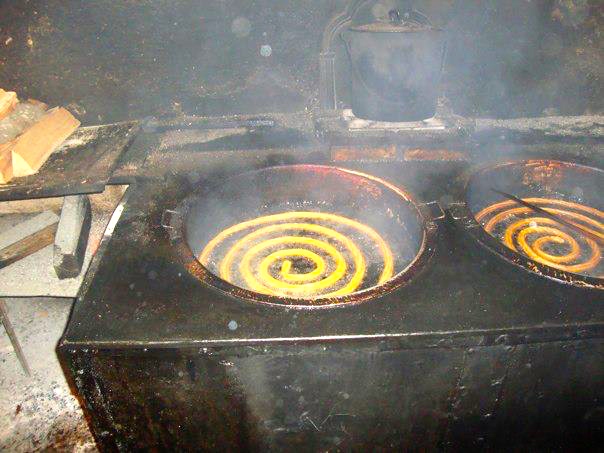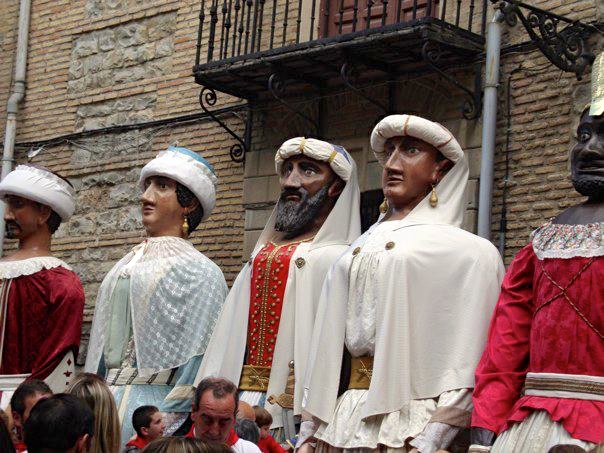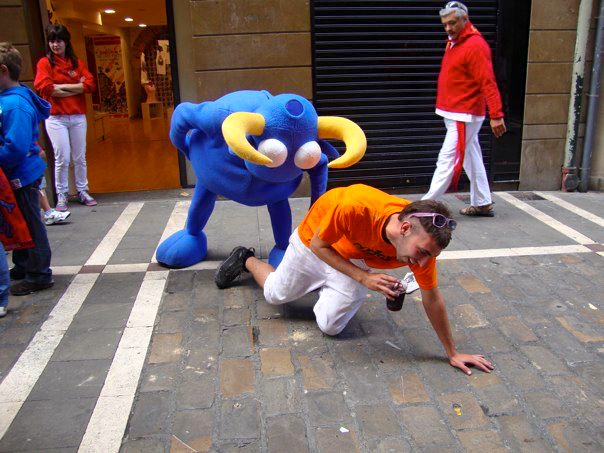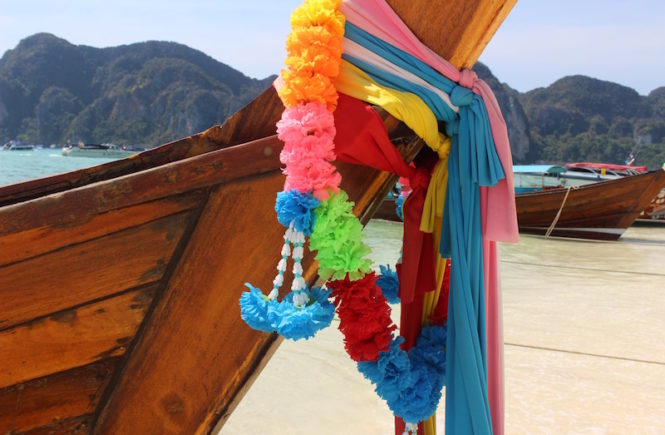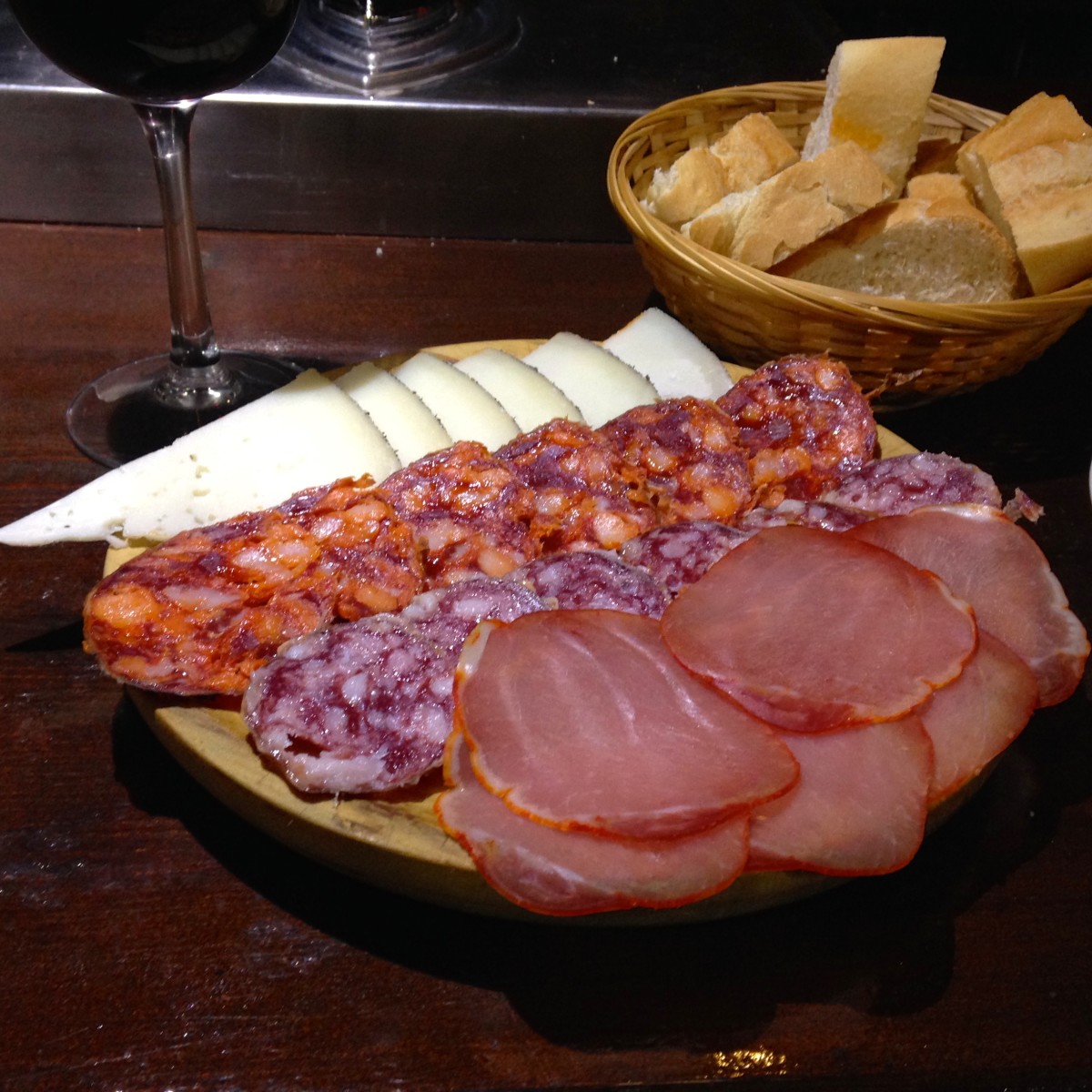In America, this weekend is the 4th of July, a tradition that has been around since… well the Declaration of Independence, July 4, 1776.
About 3,500 miles away, Spain is preparing for a different festival: San Fermines, most commonly known to Americans as The Running of the Bulls.
These two celebrations fall in perfect harmony with one another. Residents and tourists in both countries loudly express their pride and celebrate their traditions in true American and Spanish fashion respectively.
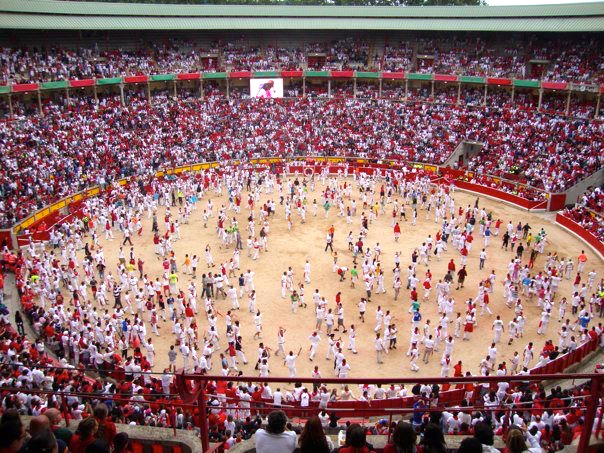
So what exactly is San Fermines?
San Fermin is the patron Saint of Navarra, the region in Spain where Pamplona is located. The fiestas of San Fermin are held each year from July 6 through July 14 and are internationally recognized due to an uncommon and preposterous tradition that the rest of the world seemingly cannot understand: The Running of the Bulls.
The Running of the Bulls in Spanish is referred to as “El Encierro”. Crowds gather from all corners of the world to witness the events firsthand and participate in one of Spain’s most famous fiestas.
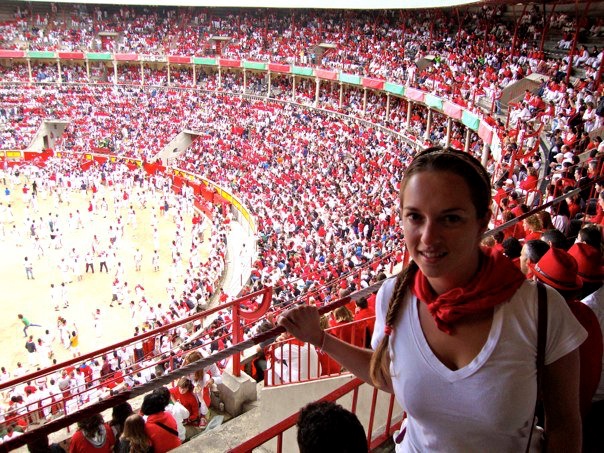
El encierro is a tradition quite unrelated to the religious origins of San Fermines, but nowadays is the most prominent part of the festival. The tradition is said to have derived from necessity turned sport. Spaniards needed to get the bulls from the corral into the bullring. It is said that the herders would compete to see who could get to the ring the quickest.
Two rockets are launched at 8 am on July 7 each year to signal the start of the affair. A group of runners, that grows dramatically each year, begins to run, and the bulls are released from the corral directly behind them. The bulls and runners weave through the narrow Spanish streets while spectators lean out windows and against wooden barricades to catch a glimpse of the spectacle.
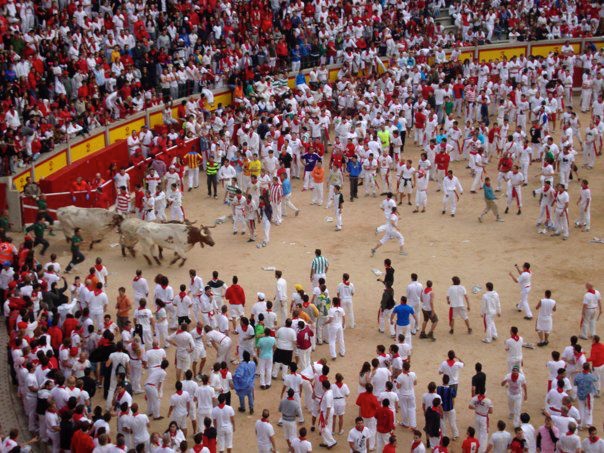
The distance between the corral and the ring is only 825 meters (about half a mile… if you’re mathematically challenged) but can seem like an eternity if you are one of the courageous… scratch that… foolish individuals who decides it is a good idea to run in front of six 1,500 pound animals.
Each afternoon the six bulls from the morning run are fought in the ring and spectators can purchase pricey seats to view this controversial Spanish tradition.
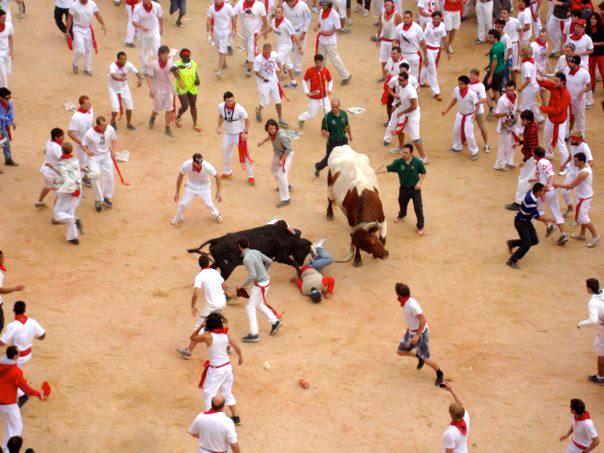
If you are like me and would prefer to skip this event and head out to the streets, this is where the fiesta truly lies.
Begin your day like everyone else and go to the oldest churerria in Spain, La Mañueta.
The churros at La Mañueta have been fried over a beech-wood fire for nearly 150 years. If you are lucky enough to be in Pamplona when the shop is open, consider yourself lucky. La Mañueta is open two Saturdays in June, Sundays in October, and everyday during San Fermines. THAT’S IT! Oh and if that seems crazy… they’re only open for breakfast, 6 am – 11 am. But trust me, a plane ride across the world could be worth it just for a taste of this.
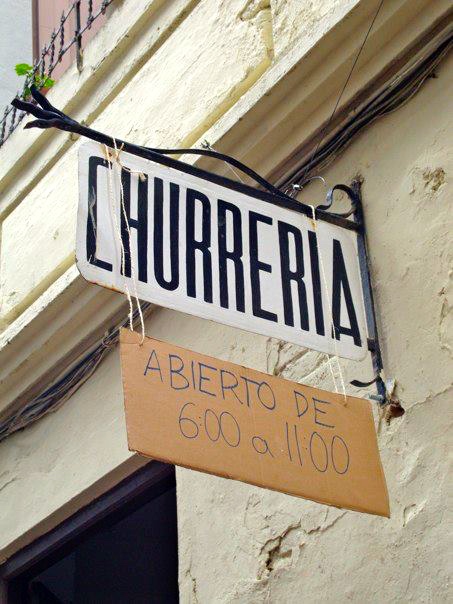
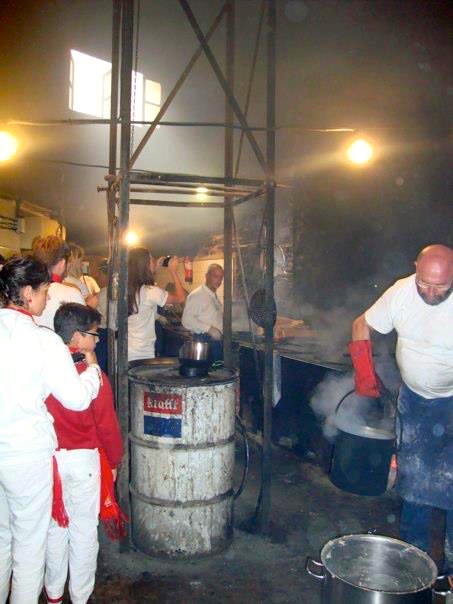
Next stop, a parade of 150 year old Giant heads, Los Gigantes in Spanish. The giants are paraded through the old city with dancers, and the big heads (smaller than the giant heads) run after and hit the children with foam truncheons. Why, you ask… I’m not quite sure.
In addition to the organized sports, religious ceremonies, medieval style parades, traditional bull fights, craft fairs, carnival games, and incredible fireworks each night, the streets, bars, and fairgrounds are crowded with party-goers.
Tapas are served in every bar, and the wine never stops flowing. The streets are cheery, and the heart of Spain is alive. Festival-goers sport red scarves and white attire throughout the region. People of all ages gather around the table to enjoy lengthy meals and in the most simple terms, celebrate.
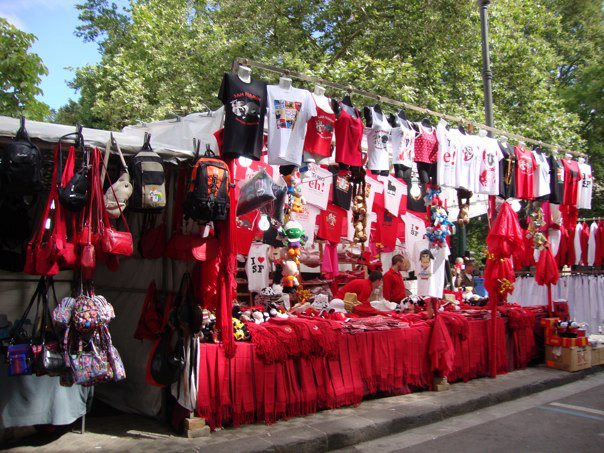
The best part is, the excitement begins all over again the next morning at 8 am for 8 more days. But like all great fiestas, the party must come to an end. At midnight on July 14, the festivities come to a close. The most extraordinary fireworks of the week are ignited, and everyone sings the farewell song called “Pobre de mi” (“Poor me” in English). The song expresses their anticipation for the year to come and their sadness that the year has ended.
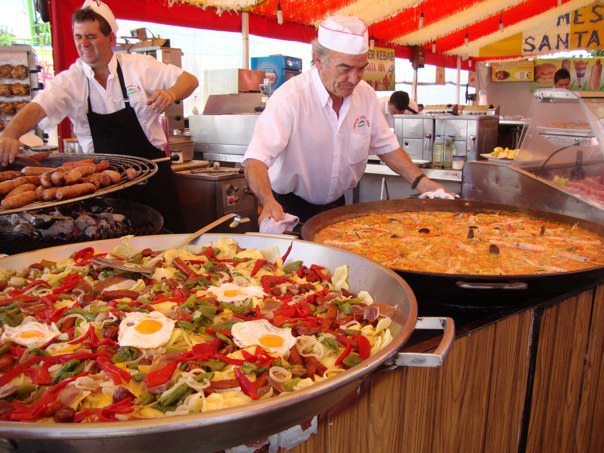
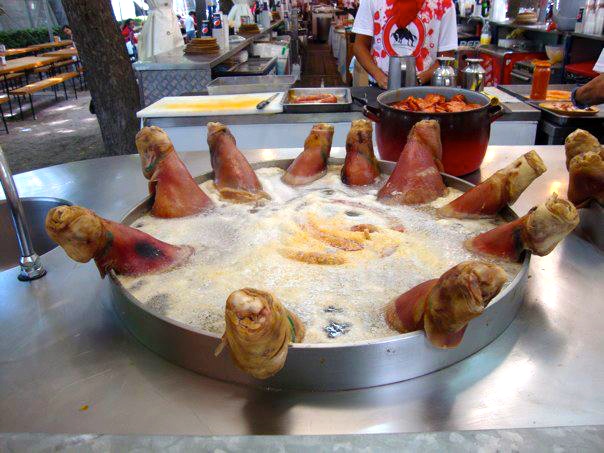
Spaniards are proud of their home and their traditions. Pamplona during San Fermines may be the best place to discover popular Spanish traditions and experience the spirit of Spain firsthand. Spaniards don’t need a reason to fiesta, but if there is one, trust me, they will find it!
So, Happy 4th of July America… and if you happen to find yourself in a Spanish neighborhood next week, check behind you for a bull!
